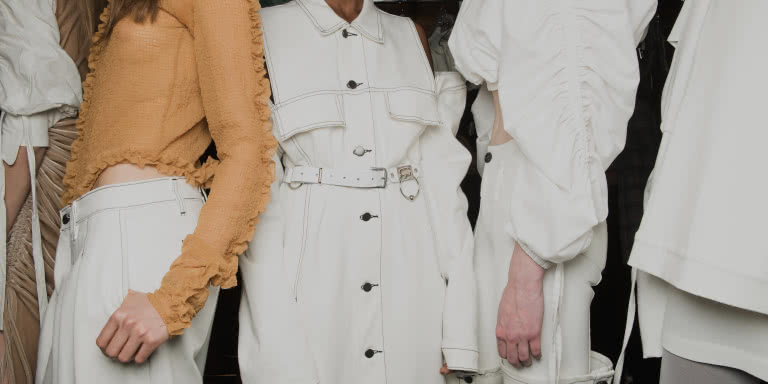Start a new career or indulge a passion
The Professional Photo, Film TV & Personal Stylist’s Course is designed to provide you with an in-depth knowledge of all areas of fashion styling. It’s also intended to help build your stylist’s portfolio to show to clients and, if you wish, as a stepping stone into full-time employment in the many industries where stylists are required.
From your first assignments, you are developing your own stylist ideas, learning about the market and working towards obtaining your first client.
This fashion styling course is not only structured to teach you the techniques of freelance styling. It’s also intended to help you obtain clients and see you get paid for your professional efforts. At the end of this online course you will know how to work as a stylist in a huge range of areas for the thousands of individuals, fashion companies, advertising agencies, television networks, magazine and Internet publishers, retail outlets and an infinite number of online businesses that require the help of a professional stylist.
Further, you’ll know how to profit from all the other less-known but highly lucrative areas of freelance styling. For example, image consultancy, food styling, room set styling, colour analysis and catalogue styling. You’ll even discover how to work with animals.
There is an insatiable demand for professional freelance styling. 99% of advertising agencies, fashion and lifestyle magazines, TV shows, business and corporate identities and celebrities rely heavily on freelance stylists. Their work is used in catalogues, brochures, magazines, TV commercials, live concerts, TV programming, public relations and by people requiring a particular ‘image’.
Experience work freedom
The Professional Photo, Film, TV & Personal Stylist’s Course gives you the opportunity of being your own boss and choosing assignments that most suit you. As a freelance stylist, you can start small and build your reputation and income assignment by assignment.
Styling is one of the few professions that does not discriminate in any way. You can be of any age, sex, race or religion and become a successful stylist. In fact, often these individual traits can be of real benefit. For example, a younger stylist will often be more familiar with teen trends where the older stylist may feel more equipped to assist more mature clients. As a professional stylist, you can also work from home and to a large degree you can choose your own clients and the nature of the work you accept.
This craft does not demand a university degree or other academic qualifications. Once you know what the industry requires, you have a highly marketable skill.
At the end of this course, you will have the necessary training and skills to successfully handle virtually any assignment. You will have an insider’s knowledge of what the market requires and how to go about providing it.
Styling work offers financial security for life. Ordinary people want to look the best they can. For those in the public eye, it’s an obligation that can’t be ignored.
There is also the quiet but undeniable pleasure of seeing your styling concepts become a reality and the satisfaction of satisfying your clients.
You’ll discover that working as a professional stylist also gives you a special standing in the community. Looking good is a priority for almost everyone. And you’re the person who can help.
What else can you expect? You’ll find that styling is an adventure limited only by your own imagination and flair – qualities which will be further developed throughout this course.
A world of opportunity awaits
Thousands of newspapers and magazines, fashion companies, advertising agencies, film and television production companies, boutique shops, corporate clients and private individuals rely on freelance stylists. And, with all the styling work that needs to be done, why not?
Stylists can work in the following areas:
Editorial styling – styling images for media publications such as fashion magazines.Personal styling/image consulting – providing advice or assistance for clients on how to improve their look and select clothing and accessories for themselvesPersonal shopping – selecting clothes for a clientShow styling – styling fashion parades, or TV personalities for shows or events
Commercial styling – styling images or looks for advertising- Fashion Styling
- Wardrobe Styling
- Catalogue Styling
- Prop Styling
- Set Styling
- Runway Styling
Stylists also work as image consultants, personal stylists, fashion editors, photo stylists, wardrobe stylists, design coordinators, personal shoppers, celebrity stylists and makeover stylists.
Stylists are needed for:
Here you will find yourself working closely with photographers, art directors, designers, artist managers, and fashion and photo editors. Print assignments include magazines, catalogue styling, publicity shoots, album covers, advertising, and movie posters.
Music, industrial and educational.
Advertising commercials and infomercials.
Features, shorts and documentaries.
Live broadcasts, news and current affairs, breakfast television, sitcoms, soap operas, dramas, styling show hosts and visiting talent.
Concerts, special events, road tours, fashion shows and theatre.
Models, musicians, television hosts, public speakers, celebrities, people in the public eye and people simply wishing to change or rediscover their look.
Here you could be doing anything from styling company executives, to styling annual reports. Certain cities are known for celebrities and recording artists. Others for fashion, advertising and television commercials. But what if you live where there are no celebrities and there is no fashion? There is still plenty of business. Companies still need stylists. For styling CEOs, for product styling, uniform styling and photo styling of every description. Stylists are used to style executives in their offices, employees going about their jobs and secretaries greeting customers walking through the front door. These kinds of images fill thousands of corporate annual reports and are sent to shareholders, trade journalists and Internet publishers. Corporate styling is a little-known but highly lucrative field.






